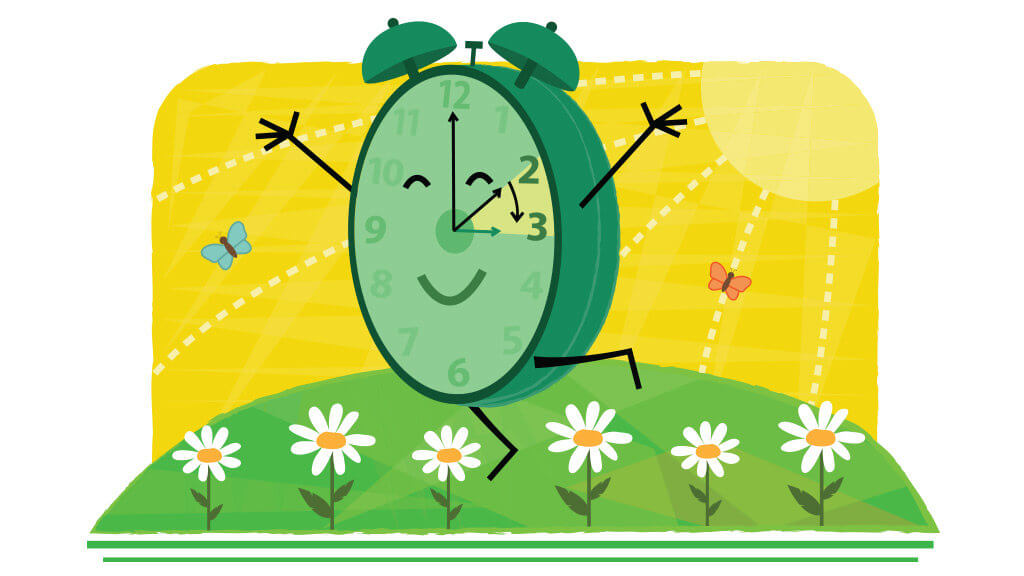Americans might have Benjamin Franklin to thank for having to put our clocks forward an hour as spring arrives. The Founding Father is credited with being the one who first suggested the practice, his reasoning being that money could be saved on candles during the longer days of spring and summer. Today, we enjoy energy savings for the same reason.
Daylight Saving Time (DST) in the U.S. begins on Sunday, March 11. At 2 a.m., we will spring forward, setting our clocks an hour forward. At that point, it becomes 3 a.m. Of course, most of us will set clocks ahead before we go to bed on March 10.
Daylight Saving Time Exceptions
There are two exceptions in the United States: most of Arizona, including the Taylor Morrison community of Mesa at Trovita Norte, and Hawaii. Both remain on standard time all year long. Most of Arizona hasn’t observed DST for about 40 years. The reason has to do with keeping summer sunsets to around 8 pm instead of 9 pm. Arizona residents enjoying the evening cool down for more hours. However, DST is still observed in Arizona on the Navajo Indian Reservation, which is in four different states.
Living in States with Daylight Savings
Initially you’ll experience the change in time separately, depending on the time zone you’re in. For example, if you live in Waterside at the Catawba, a community of new homes in Fort Mill, NC just outside of Charlotte, you’ll set your clock forward a full three hours before someone who lives in Caselman Ranch, located in Paloma in Sacramento, CA.
In the Central Time Zone, Daylight Savings begins an hour after it does in eastern states. So, for example, for people living in new homes in the Austin, TX area, such as in Travisso in Leander, it will still be 2 a.m. when it’s 3 a.m. in North Carolina. The change will begin in the Mountain Time Zone states an hour after Texas in the Central Time Zone, and an hour before California and the rest of the West Coast in the Pacific Time Zone.
How Daylight Savings Time Affects Us
Although losing an hour of sleep might not sound too bad, it can be disorienting to our bodies. In fact, some people report taking a week or more to recover. Symptoms include:
- Stress
- Sleep deprivation
What You Can Do About It
Despite a possible link between the disruption in the sleep cycle and heart attacks, there are also health benefits. Having extra hours of daylight prods us to be more active.
- Here are some tips for how to prepare your body for the DST change:
- Go to bed 15 minutes earlier than you usually do for a few days leading up to the start of DST.
- Avoid afternoon caffeine the week prior to DST. The thought is that this will make it easier to go to bed earlier.
- Minimize alcohol intake for a couple of days prior to DST, because it can disrupt the ability to stay asleep.
During DST there are actions you can take that will help you adjust:
- Get at least 30 minutes of moderate exercise three or more times a week to help you sleep at night.
- If you feel the need for a nap, keep it short so you can still get a good night’s sleep.
- Get plenty of sunshine the day DST begins.
- Regulate your sleep pattern by going to bed and getting up at the same time every day.
- If you are having trouble sleeping, avoid stimulants like alcohol and caffeine about four to six hours prior to bedtime. For smokers, avoid tobacco too close to bedtime, too.
- Eat lighter meals for several hours before going to bed.
- Although it helps to stay hydrated, avoid liquids in the late afternoon and evening.
- Wind down before bed. The idea is to avoid stimulating your brain, so a warm bath and reading are better options than watching invigorating television shows or doing crossword puzzles.
Day Light Saving Time Ends: Now What?
When winter comes and it’s time to fall back, sunrise and sunset will come about an hour earlier. Daylight Saving Time ends when you turn the clock back an hour. This year the time change starts at 2 a.m. on November 4, 2018, when clocks are turned back to 1 a.m. local standard time.
But, before you know it will be time to spring forward again!









